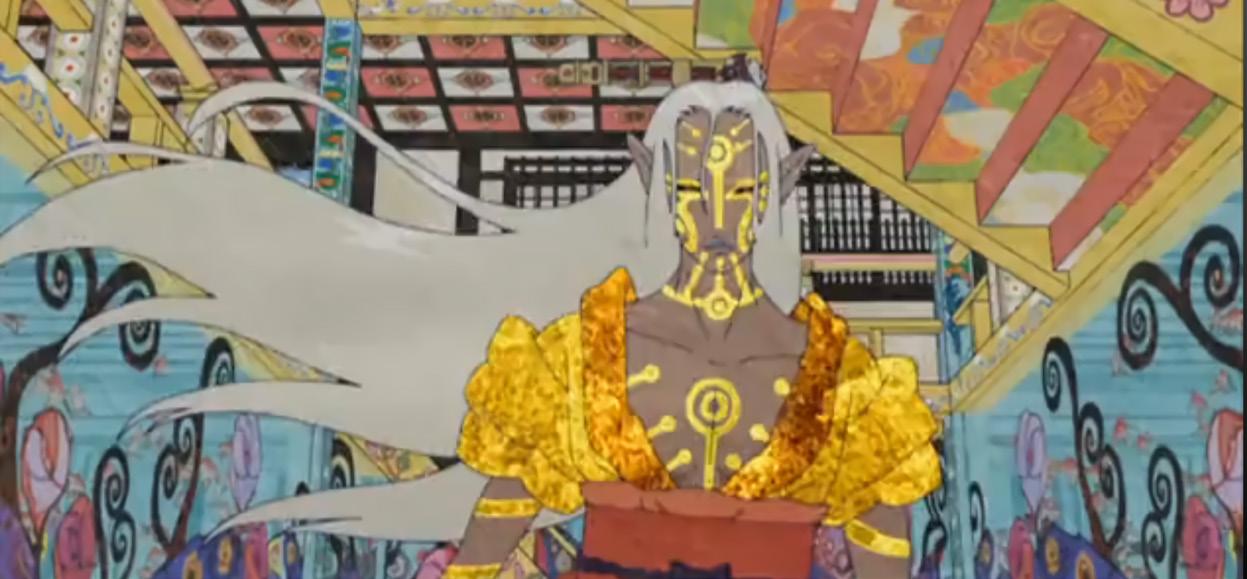
3 minute read
MONONOKE AND MUSHISHI: AN UNSETTLING TYPE OF HORROR
RACHEL MIN - Writer, 1st Year, Intended Computer Science
"Mushishi’s MC is voiced by my favorite VA"
Advertisement
Originally published on Oct. 31, 2019
Phantasmagorical--Mushishi and Mononoke build their world in a way that can only be described as such. Their fantastical, dreamlike world evokes a sense of wonder, and yet since the viewers are rooted in reality, these anime simultaneously give off an unsettling tone.
Both Mononoke and Mushishi follow a mysterious medicine seller who exterminates monsters who plague humans. These anime don’t blatantly push the horrific nature of these monsters onto their audience through their visuals. Don’t get me wrong, many monsters in Mononoke and Mushishi are unsettling to look at, and it is a completely valid way to characterize these monsters. At the same time, some monsters aren’t even given a tangible form, acting more as a disease. The anime utilize more than pure visuals. A little body horror here, some disturbing theme there, and soon you realize you’ve been sucked into an unsettling horror show.
The powers of these monsters come in all different forms. They can cause deafness, blindness, overturn boats, bring poisonous rain, create labyrinths, and create grand illusions that make characters question if they’re even alive.
In Mononoke, these monsters, referred to as ayakashi, are unnatural beings who latch themselves onto negative feelings. By determining the form and reasoning behind these ayakashi, the medicine seller exorcizes these monsters.

The hauntings of these ayakashi are brought about by their victim. Perhaps they’ve contributed to the death of another human, or perhaps the victim somehow garnered severely negative sentiments. For most of the episodes, the characters are filled with uncertainty. They are subject to horrific sights and illogical reality, and the only piece of information they have is that somehow they are being haunted by an ayakashi. Mushishi takes this uncertainty a step further by introducing the factor of chance. Unlike Mononoke’s ayakashi, Mushishi’s monsters are Mushi or bugs. Just like real bugs, they exist in the world naturally, unrelated to the existence of humans. Thus, in Mushishi, people can be haunted for a reason as trivial as going outside. Ginko, the main character, spends most of his time trying to determine what kind of mushi is plaguing the victims instead of the reason behind the mushi’s existence. If it is the victim’s fault, the reason why the Mushi is haunting them is brought out through the exorcism, however, sometimes the victim is simply a victim of chance, powerless to their fate.

In both anime, the continued exposure of these monsters usually spells suffering or death, which is where the main character steps in to save the day. Or not.
At the end of the day, most of the stories end on a muted note. The main characters usually manage to exorcise the monster, but it isn’t necessarily a happy ending. Sometimes, the damage of the monsters is irreversible. Sometimes, the monsters were hiding an underlying problem. The animes’ reaction to this is that the aftermath of destroying these monsters can’t be helped. The victims will just have to live on with the burden of the repercussions. The endings hold a tragic outlook with the hope that the characters, powerless to their situation, will somehow live on.
Mononoke and Mushishi might not keep you up at night with images of eldritch terrors. However, the way wonder, powerlessness, and tragedy are brought about through their monsters end up sticking to its audience just as deeply.




